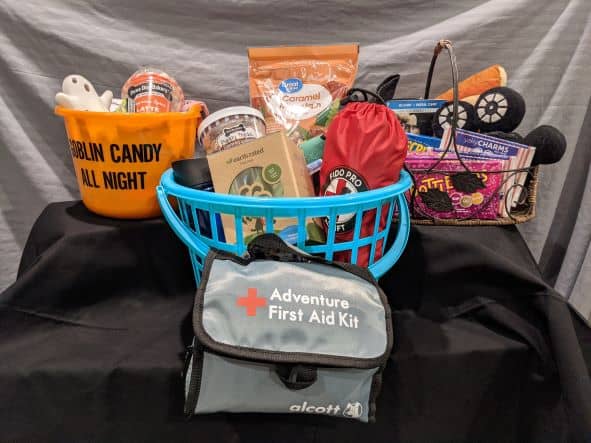Swimming Fun or Deadly Danger? The Truth About Blue-Green Algae Toxicity in Dogs
As an Amazon Associate, I earn from qualifying purchases. We may receive a commission for purchases made through these links. This site also contains affiliate links to products besides Amazon, like Etsy. We may receive a commission for purchases made through those links too (at no additional cost to you).
Blue-Green Algae Poisoning in Dogs
One of the scarier things for dog owners during summer is the deadly threat of blue-green algae toxicity in dogs when we let our pets swim in lakes and ponds. Each year, the news covers multiple heartbreaking stories of humans and dogs both getting incredibly sick. Unfortunately, the dogs often end up passing away before they can even make it to the vet.
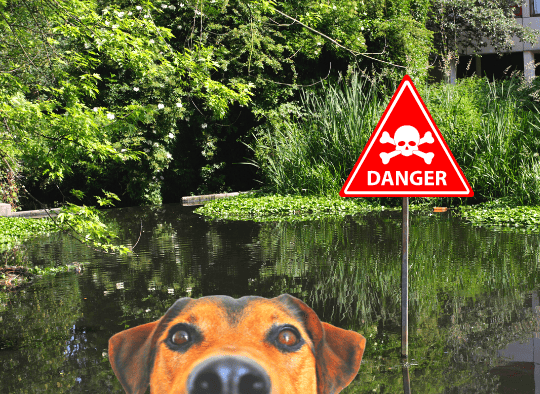
Each year, blue-green algae is becoming more of an issue, but many pet owners still haven’t heard about it. This post will dive a bit deeper to go over what blue-green algae is, where and how it occurs, potential symptoms, and how to avoid it so you and your water-loving pup can still have a fantastic summer!
What is Blue-Green Algae?
Blue-green algae is technically a bacteria called cyanobacteria. It’s important to note that not all types of cyanobacteria are harmful but because of the severity of the illness, it is best to treat every kind as if it is toxic. It is similar to algae in that it thrives in warmer bodies of water. Blue-green algae becomes dangerous when the bacteria start to multiply and cause an ‘algae bloom’.

What does Blue-Green Algae look like?
It is super important to know that though it is called blue-green algae, it can appear as blue, green, brown, or red. You may not even be able to see it depending on where it’s at in its life cycle. Basically, doing a visual check of the water is helpful, but it is not a surefire way to make sure that it is 100% safe.
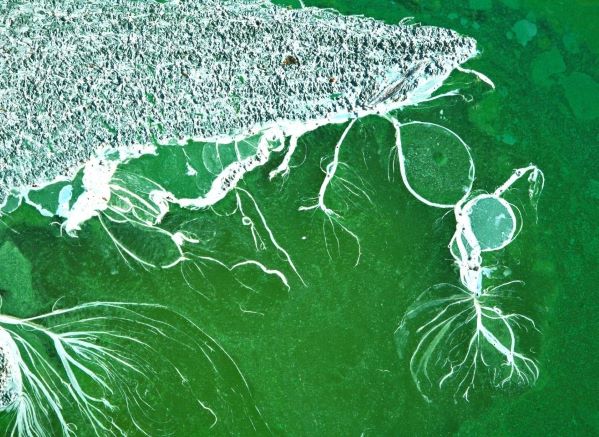
Where does Blue-Green Algae happen?
Cyanobacteria can be found in pretty much any body of water. The dangerous blue-algae blooms are more likely to occur in bodies of water that are warm, slow-moving, and nutrient-rich.
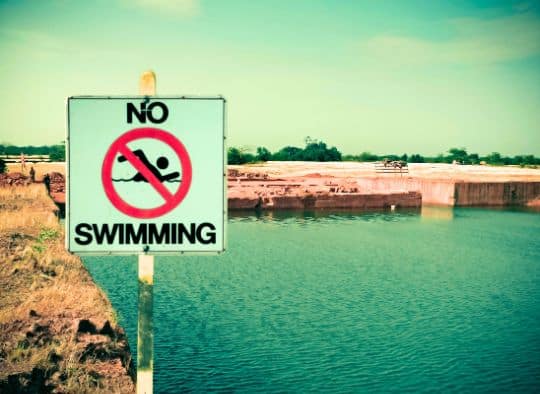
A huge contributing factor to these algae blooms is fertilizer and/or animal waste run-off because of the nitrogen and phosphorous that they carry. These nutrients help fuel the bacteria’s growth. This means you should be extra cautious around bodies of water that are near areas with farmlands and/or golf courses.
When Should You Watch for Blue-Green Algae
You should be more cautious of blue-green algae during hotter weather. This is because algae blooms occur more often in warmer water and will happen more frequently towards the end of summer and even into the fall. Unfortunately, due to warmer global temperatures in spring, some of these blooms are starting as early as May and June even in some of the northern states.
Blue-Green Algae Toxicity in Dogs
Blue-Green Algae is dangerous because it can produce toxins that attack the liver, central nervous system, and/or the skin. Dogs (and humans) get sick by accidentally ingesting contaminated water. Since dogs will often lick themselves clean after swimming or even drink the contaminated water straight from the source, they are more likely to get sick. Depending on the amount of toxin ingested, symptoms can show up immediately or even up to 1 hour after exposure.
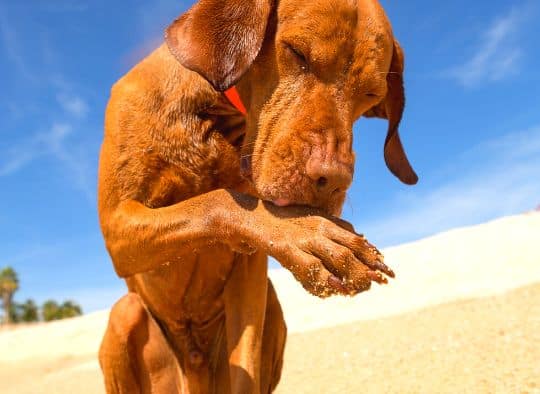
Signs of Blue-Green Algae Toxicity Symptoms in Dogs
Blue-green algae toxicity in dogs is very serious and has severe consequences. Symptoms can include panting, excessive drooling, disorientation, vomiting, confusion, diarrhea, liver and/or respiratory failure, and death. Depending on the severity of the algae bloom and how much was ingested, your dog could show symptoms anywhere from instantly to up to an hour later.
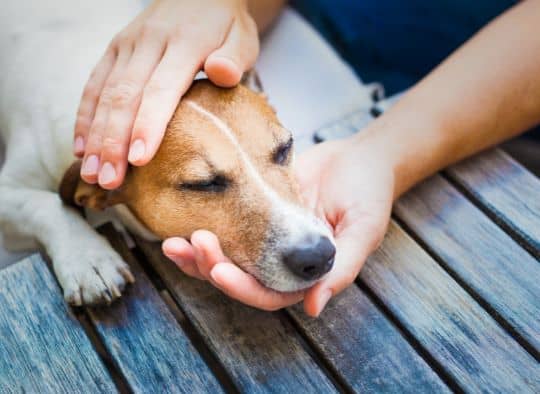
If you think your dog may have come in contact with contaminated water, time is of the essence. This is a situation where waiting to see how they progress is the worst thing you can do.
Treatment of Blue-Green Algae Toxicity in Dogs
If you think your dog may have ingested contaminated water, don’t wait. This is an emergency. Call a vet and take your pet in immediately. You will most likely be instructed to induce vomiting which can greatly increase their chance of survival. This can be done using the hydrogen peroxide in your Dog First Aid Kit. You also want to prevent them from taking in any more toxins, so you may need to find a way to rinse them off or prevent them from licking any water droplets off of themselves.
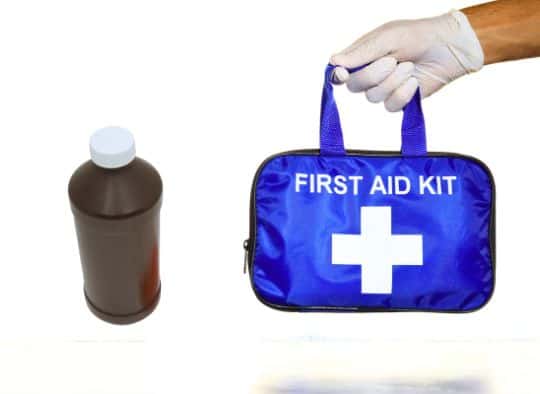
Unfortunately, there is no actual treatment for blue-green toxicity, so your vet will most likely focus on flushing the bacteria out of their system as quickly as possible. Vomiting will probably be induced and activated charcoal given. Otherwise, your veterinarian’s main focus will be fighting against the toxicity symptoms to help your dog survive.
Preventing Blue-Green Algae Toxicity in Dogs
Sadly, the outcome for dogs that have gotten blue algae poisoning is not great. Because of this, it is best to work on preventing our dogs from encountering it all.
- If you know there are bodies of water where you will be traveling, you can look up the health status of the lakes in the areas that will be nearby. Be sure to check the area’s website and any signs posted in the area for updates.
- Don’t let your dog drink or swim in slow-moving or smelly water. This particular bacterium thrives in calmer waters, so lakes and ponds are typically more at risk than rivers and fast-moving streams.
- Remember that ingesting contaminated water is how your pup can get sick. If you have any concerns (or just to be safe), keep them from drinking the water. And after your dog is done swimming, rinse them off right away to limit the chance of ingestion when they try to lick themselves ‘clean’.
- Be extra careful if you are taking your dog to swimming holes near farmlands or golf courses. The chemicals from the fertilizers used and animal waste help feed blue-green algae which can lead to dangerous levels of cyanobacteria in the waters. You will also want to be more cautious whenever the weather heats up.
Understanding the Rising Concern of Blue-Green Algae to Keep Your Dog Safe
Personally, I hadn’t heard of blue-green algae toxicity in dogs up until a few years ago. What once seemed a rare and occasional danger is seemingly becoming more common. Unfortunately, many dog owners are still unaware of this issue. I hope this post has helped you have a better idea of what to look out for and helps you keep your pup safe while you are exploring the world together. Playing in water is a great way to help keep your pet cool on hot days, not to mention a ton of fun! Don’t worry, your dog doesn’t have to miss out on all the fun. It can still be a safe activity with a bit of research beforehand.
Pin For Later:
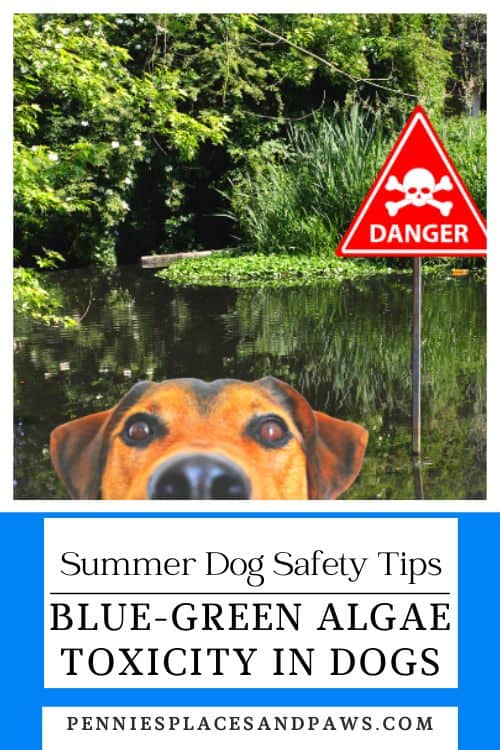
Amazon and the Amazon logo are trademarks of Amazon.com, Inc, or its affiliates.


